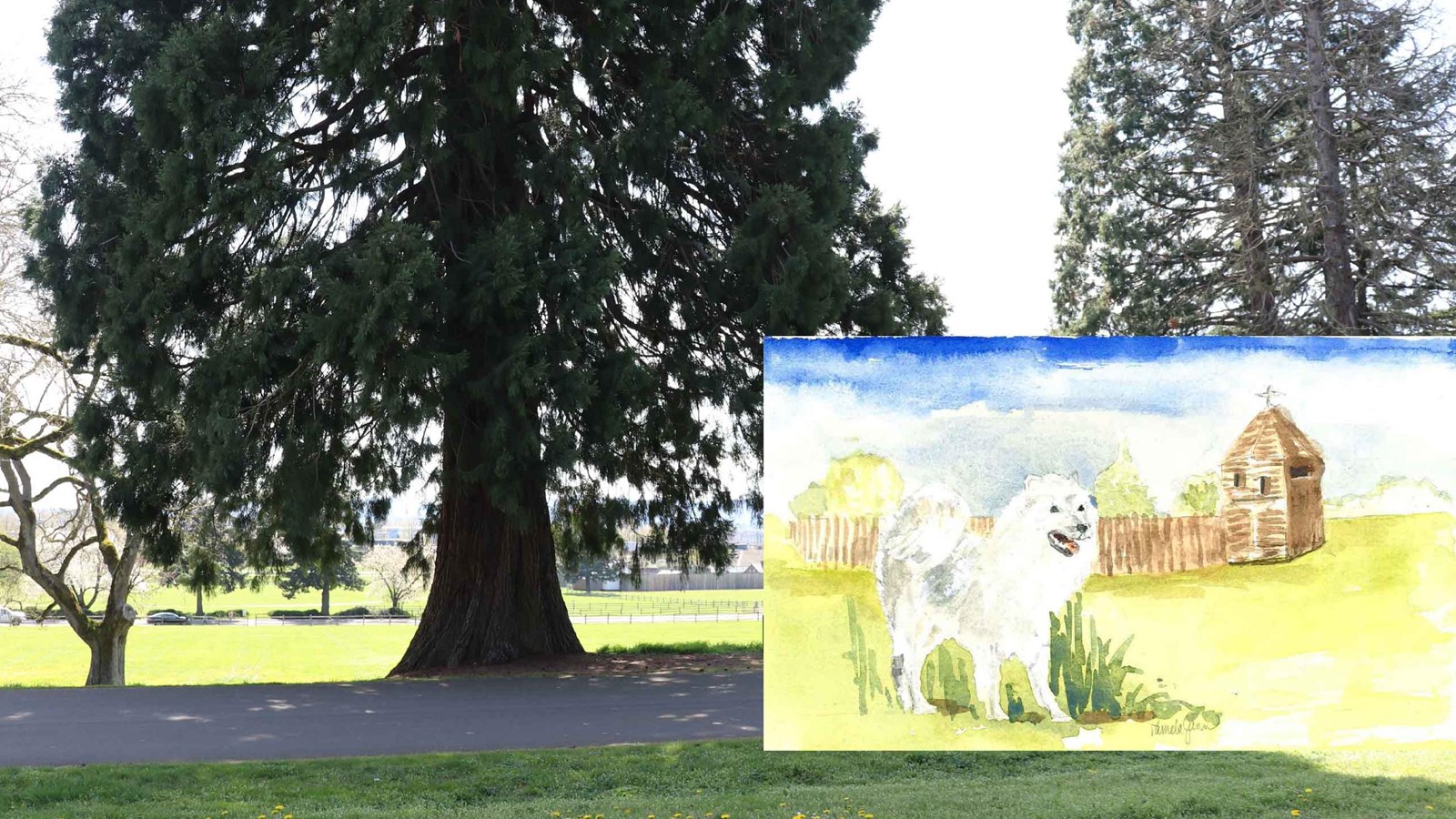Last updated: May 2, 2025
Place
BARK Ranger Stop 3: George Gibbs and Mutton

NPS Photo, artwork by Pamela Gunn
Quick Facts
Amenities
2 listed
Parking - Auto, Pets Allowed
In the 1850s, George Gibbs, a naturalist on the Northwest Boundary Survey expedition to map British Columbia and the American Pacific Northwest, visited Fort Vancouver. Mutton, an indigenous wooly dog, was Gibb’s companion.
It’s uncertain how Gibbs originally acquired Mutton, but it’s likely that he got the dog while working with local communities in Stó:lō territory, present-day British Columbia.
Before the arrival of Europeans, the Pacific Northwest was home to several dog breeds, including larger village and hunting dogs, as well as smaller woolly dogs, which were kept separately to prevent interbreeding. Woolly dogs were slightly larger than modern American Eskimo dogs, characterized by curled tails, pricked ears, and pointed, foxlike faces. They howled instead of barking. Traditionally, only high-status Coast Salish women were permitted to keep woolly dogs, and a woman's wealth was often measured by the number of dogs she had. Blankets woven from dog hair—often mixed with fibers from mountain goats, waterfowl, or plants—were important for trade and gifts.
Along with alpacas and llamas, these woolly dogs are among the few animals in the Americas intentionally bred for their fleece. Yet, the practice of keeping woolly dogs and weaving textiles made from woolly dog yarn declined throughout the 19th century, and the dogs were considered extinct by the beginning of the 20th century. Today, the only confirmed woolly dog specimen is Mutton, whose pelt has been housed in the Mammals Division of the National Museum of Natural History at the Smithsonian Institution since his death in 1859.
It’s uncertain how Gibbs originally acquired Mutton, but it’s likely that he got the dog while working with local communities in Stó:lō territory, present-day British Columbia.
Before the arrival of Europeans, the Pacific Northwest was home to several dog breeds, including larger village and hunting dogs, as well as smaller woolly dogs, which were kept separately to prevent interbreeding. Woolly dogs were slightly larger than modern American Eskimo dogs, characterized by curled tails, pricked ears, and pointed, foxlike faces. They howled instead of barking. Traditionally, only high-status Coast Salish women were permitted to keep woolly dogs, and a woman's wealth was often measured by the number of dogs she had. Blankets woven from dog hair—often mixed with fibers from mountain goats, waterfowl, or plants—were important for trade and gifts.
Along with alpacas and llamas, these woolly dogs are among the few animals in the Americas intentionally bred for their fleece. Yet, the practice of keeping woolly dogs and weaving textiles made from woolly dog yarn declined throughout the 19th century, and the dogs were considered extinct by the beginning of the 20th century. Today, the only confirmed woolly dog specimen is Mutton, whose pelt has been housed in the Mammals Division of the National Museum of Natural History at the Smithsonian Institution since his death in 1859.
